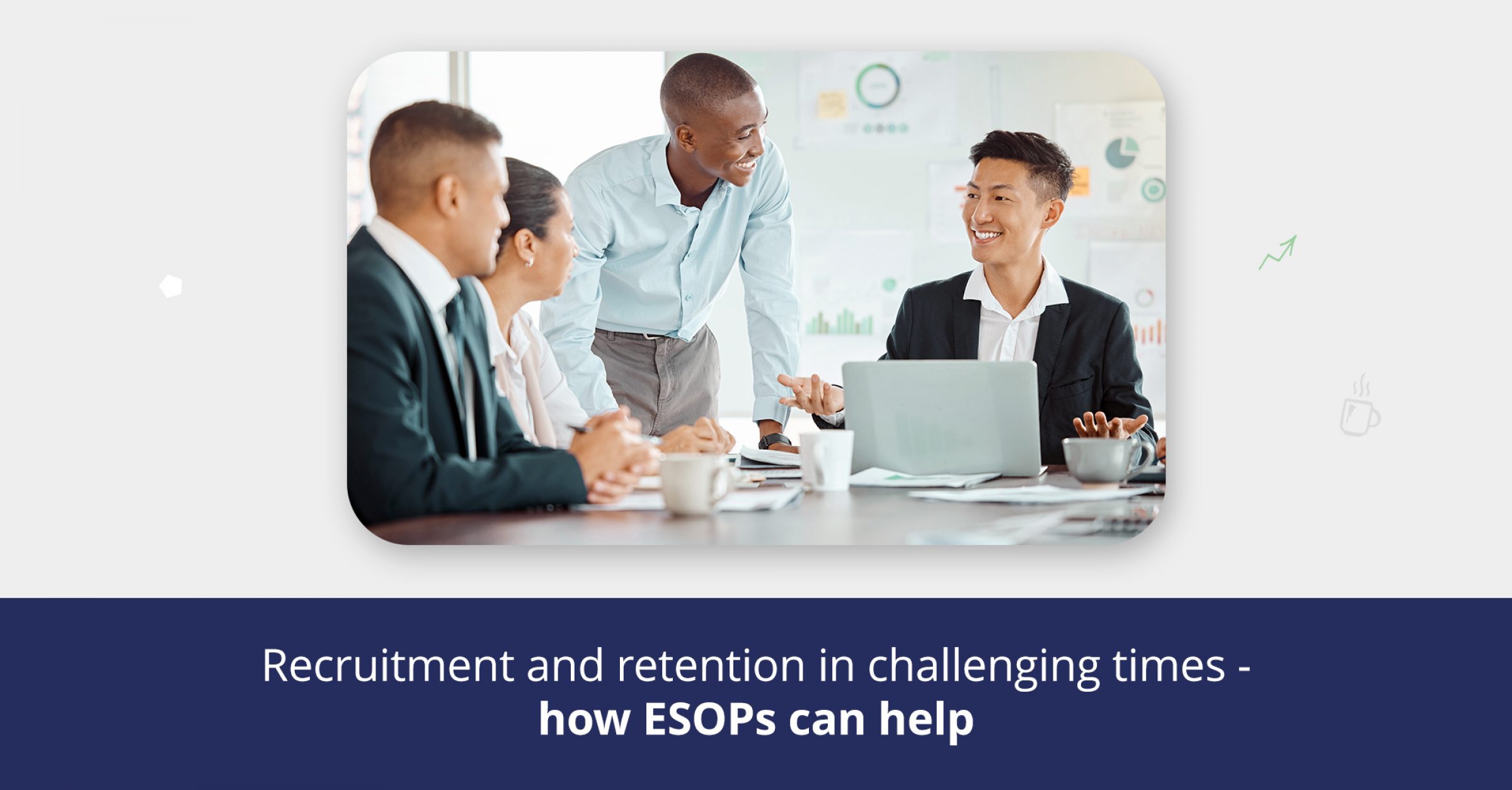Against a backdrop of ongoing stock market and general economic uncertainty, it is vital for companies based in Canada to get their recruitment and retention policies right to create an internal environment where employees are fully committed and encouraged to give their best efforts.
You will always want to secure the best people to fill key positions and hold on to existing personnel who impact positively on company performance, but these objectives are arguably even more important in a bear market, when the business environment can be particularly challenging and it becomes even more vital for companies to be firing on all cylinders.
Challenging recruitment landscape
In a HubSpot 2023 Marketing Strategy Report, 48% of global marketers said that concerns around the prospect of an economic downturn or recession have influenced their company’s hiring plans. Just over one-third of respondents said they have slowed down or even paused recruitment, while more than a quarter said their company had laid off personnel, and a similar number had to rescind job offers they had previously made.
Meanwhile, a 2023 Gallagher Report looking into organizational wellbeing found that recruitment and retention continue to rank as the two top challenges facing Canadian companies. Based on data provided by more than 500 companies, the report stated that more than one-third of respondents experienced employee turnover of at least 15% in 2022, while headcount growth projections were down 11 points when compared to the corresponding report last year.
Findings such as these, underscore the reality of doing business during an economic downturn. Companies may find they need to be more careful when it comes to hiring but will still want to ensure they attract the best candidates for key positions that need to be filled, while the focus also turns to the need to retain existing employees and encourage them to excel on a day-to-day basis.
How to attract and retain talent?
So, how to go about it? How do you make your company attractive to the talent you want to recruit and current employees you wish to retain, and then get the very best from them? The key is to reward your people in ways that will motivate them to excel in the workplace and also encourage them to stay with you at least into the middle term.
These rewards need to be tangible and quantifiable. Yes, non-monetary workplace perks can help to generate good morale and a positive atmosphere, but if you want to recruit and retain key people and foster a high-performance environment, then you will need to offer an attractive compensation and benefits package.
Employee share ownership
This is where employee share ownership plans (ESOPs) can enter the picture. With ESOPs, you incentivise individuals to join or remain with your company through equity-based awards that vest over time, e.g., if you offer employees shares or share options that will come to them gradually over three years, then that means they will need to stay with the company for at least that period of time if they want to derive the maximum benefit.
The logic is that with employee share ownership, your people feel like they have a stake in the company, they draw a direct connection between the company’s success and their own prosperity, and it brings them into alignment with the business’s objectives, i.e., employer and employee want the same thing and both work towards achieving those goals.
The National Center for Employee Ownership (NCEO) has highlighted the findings of several academic studies into employee ownership and overall performance which, when viewed together, suggest that companies tend to be more productive, grow faster, and are less likely to go out of business when
- All employees have access to ownership.
- There are high rates of participation.
- Concentration of ownership is limited, i.e., ownership is distributed among a relatively large group of individuals.
Why do we see these positive correlations? No doubt there are many answers to that question, but at the heart of it is the fact that employees with an ownership stake have more skin in the game than their counterparts in businesses that do not offer equity to their people. When individuals own shares in the company that employs them, they tend to work harder and smarter, because they recognise that they stand to benefit directly from the growth of the business, and this also translates into lower levels of absenteeism and higher rates of retention.

Canada and employee ownership
In general, Canada has been slower to legislate for employee ownership than some other countries, such as the United States and the United Kingdom. However, progress has been made, with the Government announcing earlier this year its intention to legislate for the introduction of Employee Ownership Trusts (EOTs) from January 2024, and November’s Fall Economic Statement signalling an additional measure, exempting taxes on the first $10 million made in capital gains arising from the sale of a business to an EOT.
Despite this, the core ideas behind employee equity plans have yet to properly dent the Canadian public consciousness.
This underscores the point that Canada is currently some distance from the cutting edge as it relates to thinking and legislation on employee ownership. With that in mind, now is the time for companies and employees alike to educate themselves on the possibilities that currently exist here.
Partly with an eye on doing just that, Global Shares, a JP Morgan company, recently hosted a webinar geared for the Canadian market – How to Motivate, Reward, and Retain in a Bear Market.
Speaking at that event, Joanna Phillips, Vice President, ESOP Builders – ESOP design specialists based in Toronto – emphasised how ESOP participation nurtures a long-term perspective.
“If you are agreeing to be part of a company, not only from an employee standpoint, but also from an ownership standpoint, you have two levels of commitment rather than just one, so you’re more likely to stay for a longer period of time. You’re less likely to be tempted to see if the grass is greener on the other side. Instead, you have this additional commitment that’s pulling you to put your effort into the company you’re at right now,” she said.
She also pointed to benefits for the employer associated with greater staff retention, beyond the obvious fact of employees remaining with the business for longer periods.
“You’re retaining talent, but you’re also keeping those people away from your competitors. There’s a double benefit in that. Also, think about the cost and effort involved in attracting people and then training and developing them. You can make the most of that when you implement some sort of employee ownership plan that helps make them happy to stay where they are for the long haul,” she said.
Actually, “ESOP” when used in Canada doesn’t have a universal meaning; however, it shouldn’t be taken to describe a specific type of plan. More correctly, it is an umbrella term which encompasses the range of employee equity award possibilities available to companies.
Joanna outlined some of the possibilities.
“The owner’s goals are going to help drive what the design of a plan looks like. Does the owner prioritize their own exit, employee engagement and ownership culture, or attraction and retention? You might go more towards a stock option type of plan as a way to reward employees’ effort and commitment, or you might have a direct purchase plan, where the employees invest and become owners right away. You might even have a combination. Overall, you want to make sure that it is attractive for their participation and that it’s easily accessible, especially if it’s a broad-based program, where you want the majority of people to participate,” she said.
So, what companies should be looking to explore these possibilities? According to Joanna, employee share plans can be suitable right across the business spectrum. “ESOPs in general can work for a wide variety of industries and for companies of different sizes, whether small, medium, or large. What’s most important is to identify the right plan structure for your goals as the business owner and those of the company. It’s not a one size fits all,” she said.
For more on why you should consider an ESOP for your business, check out our webinar – How to Motivate, Reward, and Retain in a Bear Market – here, now available on demand.
By visiting a third-party site, you may be entering an unsecured website that may have a different privacy policy and security practices from J.P. Morgan standards. J.P. Morgan is not responsible for, and does not control, endorse or guarantee, any aspect of any linked third-party site. J.P. Morgan accepts no direct or consequential losses arising from the use of such sites.
Please Note: This publication contains general information only and J.P. Morgan Workplace Solutions is not, through this article, issuing any advice, be it legal, financial, tax-related, business-related, professional or other. J.P. Morgan Workplace Solutions’ Insights is not a substitute for professional advice and should not be used as such. J.P. Morgan Workplace Solutions does not assume any liability for reliance on the information provided herein.



